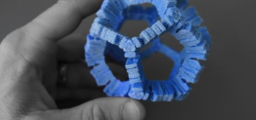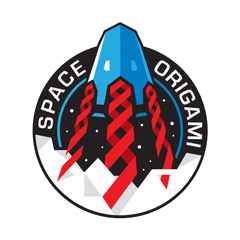Posted by: Kalorintschi
Why do we want to conduct our experiment in microgravity?
The human body contains more than 100,000 proteins. Each of these protein structures is different and contains important information for our health. It is therefore important to elucidate these structures. The microgravity conditions on the International Space Station enable us to grow high quality crystals that can open the door to new possibilities and discoveries for life on Earth. But why is microgravity is so beneficial for crystallization?
The characteristic feature of crystals is the regular arrangement in all three spatial directions, composed of the same particles.
The particles that make up crystals, in our case DNA origami structures, repeat themselves hundreds of thousands of times or more in a perfect lattice. Like a series of bricks on a wall, but in three dimensions. The more perfect these brick rows (or in our case the DNA origami structures) are aligned in the crystal, the more we can learn about the particles that make up the crystal.
Optimal crystallization is realized when the particles are able to attach themselves unhindered from all sides. On earth, the particles often cannot regularly attach themselves to a nucleation nucleus and do not form a homogeneous crystal.
The work in microgravity enables us to eliminate two disturbing effects caused by Earth’s gravitation.
One of them is called sedimentation effect: After crystallization has started, a collection of particles – the crystal – form around the germ cell. It has a larger specific mass and sinks as a result. That’s why the homogeneous deposition of particles from all sides is no longer possible.
.png)
On the other hand, the convection effect: In a viscous liquid which is heated or cooled from one side, temperature differences lead to thermal expansion and contraction. The resulting density differences in the liquid create buoyancy forces, causing particles to sink or rise. This movement, caused by density differences and the resulting specific mass differences, leads to turbulences in the sample, which disturbs the homogeneous growth of the crystal. In microgravity, specific mass differences lead to a negligible small movement of the particles, allowing a regular crystal to grow undisturbed.
.png)
Since we have microgravity conditions on the International Space Station, sedimentation and convection effects are negligibly small.
Therefore, the ISS enables us grow a homogeneous macroscopic 3D crystal of DNA origami, which is an unsolved task on Earth so far.
Very interesting blog article on why crystallization in microgravity is important for medicine (also with a nice video):
Your Space Origami Crew






Comments are closed.